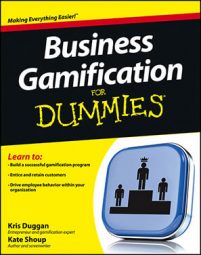Business gamification efforts typically employ a few different types of points for gameplay. These include experience points, redeemable points, and karma points. Some designs use multiple point types. It all depends on what type of gameplay behavior you intend to drive.
You need not limit yourself to one type of points in your gamification efforts. It depends on what gameplay behaviors you want to reward. In some cases, a point unit will contribute to real, extrinsic rewards. In other cases, it’ll simply be tied to rank, status, and reputation within a community.
Experience points in gamification
Experience points are used in many games to quantify a player’s progression through the game. Each time a player performs some type of action in a game system, he or she earns experience points. The more you interact with a game system, the more experience points you earn. Experience points can only go up.
These points typically don’t act like currency in the game system — that is, they can’t be redeemed for rewards or prizes. Rather, they’re the method by which players are ranked within the system. They’re also the method by which game designers monitor and guide players. For example, game designers might give players with lots of experience points access to more difficult levels or challenges.
Most gamified systems track experience points — even if players aren’t made aware of them. Experience points enable gamemakers to stay abreast of their players and the activities they engage in. This in turn enables those gamemakers to tweak the system for improved outcomes.
A subset of experience points are reputation points — that is, experience points that are awarded only for behaviors in a particular area or subject. In systems that require trust, reputation points are essential; users who score high in reputation points can reasonably be considered trustworthy.
Redeemable points in gameplay
Redeemable points are — wait for it — points that can be redeemed. Maybe players redeem points for a tangible reward, such as a plane ticket. Or maybe they redeem points within the game system itself — for example, to “purchase” a special tool. That’s an example of a virtual reward.
Unlike experience points, which can only rise, redeemable points can go up or down as users redeem them for rewards. Typically, employing redeemable points will involve integrating the point system with a traditional loyalty program.
Karma points in gamification
Some game systems use karma points. For example, suppose you wrote a blog post that another user finds helpful. That other user might give you karma points in the form of a high five or a thumb’s up — whatever unit the site uses. The idea is to promote altruism among users.
A great example of karma points in action can be found on Reddit, a social news website where users submit content and other users upvote it or downvote it. These votes rank the content and ultimately determine the content’s position on the website’s pages. Content receiving the most upvotes — or karma points — rises to the top, with the top content appearing on the website’s home page.
Similar to karma points are gifting mechanisms, which enable users to distribute wee virtual gifts to others on the site — for example, a virtual birthday cake or some digital jewelry.

